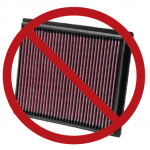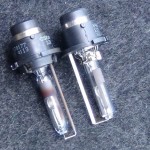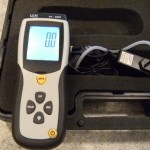Popular Posts
- Don't Block or Remove the EGR Valve, It's Saving You Money
- Keep Your Engine Alive: The Importance of Oil Temperature
- Low Temp Thermostats: What's the Advantage?
- Wheel Tech, Part III: Wheel Diameter's Effect on Performance
- Beating the Heat: Advantage of a High Pressure Radiator Cap
- How to Compare Weight Savings to Horsepower Gains
- Check Your Engine's Health: With a Vacuum Gauge
- Wheel Tech, Part II: Width Matters
- What's So Wrong With Nitrous?
- Stiff Stuff: Strut Bars and Braces
Resources & Classes
-
Author Archives: Nathan Morris
Yet another nail in the coffin for “drop-in” filters…
I've been saying it for years, but "drop-in" air filters such as those marketed by multiple major names are unfortunately, mostly a sham.
I have yet to see a single vehicle where when I measured pressure drop across the filter that a drop-in filter made a measurable improvement. Pressure drop by the way is NOT a measurement of flow, but rather an indirect measurement of flow (by measuring how much air pressure has been lost from one point in a pipe system to another), one which especially in the case of filters is more accurate than a flow bench.
Posted in Engine
Comments Off on Yet another nail in the coffin for “drop-in” filters…
Review: Maxlux D2R vs. OEM Lexus (Phillips OSRAM) HID Bulbs
OEM and even aftermarket HID replacement bulbs are expensive, but I found a set of bulbs so cheap it's almost unbelievable.
The other night the passenger side bulb on project Lexus turned a nice shade of purple. The next time I turned on the lights, the passenger bulb was dead.
I priced the OEM bulbs at about $90 each bulb! ouch! $180 to replace bulbs? There are full HID conversion kits for less. Aftermarket bulbs varied around $40-80, each bulb, still in the $80-160 range for a pair.
I wanted to keep the standard 4300k temperature rating as I don't care for the "blue" or "purple" lights and my understanding is that the closer to sunlight (around 4300-4500k) you are the better your actual visibility. 6000k and beyond actually have less visibility than the typical OEM color which is around 4300k. The number has nothing to do with how bright it is, everything to do with the color.
Anyway, I found a "generic" bulb on Amazon from Maxlux that I thought I'd give a shot. It was $36.99 for a PAIR which is so stinkin' cheap that even if they sucked, it was worth a try at least. Maxlux seems to offer other HID bulb sizes too (D4R, D2S,=, etc) as well as some kits which I can't say anything about as I've never used them. None the less, worth looking into if you're looking for HID bulbs.
The bulbs are slightly shorter than the factory bulbs and the base is slightly different but fitment was perfect. I replaced the passenger side bulb first and drove around with one factory and one Maxlux bulb for about a week. There was no significant color difference and if anything the new bulb was brighter (probably more due to being new than anything) and closer to white than the factory one (also probably due to age). (more…)
Posted in Audio & Visual
Comments Off on Review: Maxlux D2R vs. OEM Lexus (Phillips OSRAM) HID Bulbs
MAF vs Differential Pressure for Intake Testing
If you haven't read anything of mine on measuring intake restriction, you'll want to read this series first before you read this.
A subscriber, John Marlow, recently submitted a question that I thought I'd take a few moments this week to talk about. I also saw a similar question out on one of the forums that had linked to an article here so I figured it was worth talking about.
"Why not just measure intake restriction using an OBDII tool to read MAF (Mass Air Flow Sensor) values (on cars equipped with a MAF) and determine if flow is better that way?" -- John Marlow, Topeka, KS
Thanks John for your question!
This is actually really good thinking and using the MAF to see if a modification helped or not would be better than the "butt dyno", but I still lean on the differential pressure meter for some reasons I'll discuss in this article.
As long time readers know, I like to use a differential pressure meter (or vacuum gauge, or digital manometer) to measure restriction in the intake system to guide modifications to that system. I like to use this rather than the MAF sensor because with a differential pressure meter, I can take measurements at different points in the system while the MAF only allows an overall figure. If I want to know if a particular bend is restrictive or if the resonator box is causing the problem, I can use the DPM (differential pressure meter) to measure the pressure drop across those parts individually and figure out which is the culprit of my flow loss.
The MAF measures a few different things while differential pressure only measures pressure drop which makes MAF readings less repeatable which is important for "scientific" modification. MAF readings are also much harder to measure on a OBDI (pre-1996) car.
So let's unpack some of these points a little bit to make more sense of them.
Posted in Engine
Comments Off on MAF vs Differential Pressure for Intake Testing
Low Temp Thermostats: What’s the Advantage?
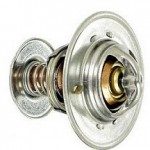 This week we're talking about low temperature thermostats, another item that nearly every tuning house sells and yet fail to really explain what they're for. A few months back, we talked about high pressure radiator caps and what advantage they offered, this time though we're looking at a part that is far more perplexing.
This week we're talking about low temperature thermostats, another item that nearly every tuning house sells and yet fail to really explain what they're for. A few months back, we talked about high pressure radiator caps and what advantage they offered, this time though we're looking at a part that is far more perplexing.
Here are a few descriptions from websites/manufacturers selling these, notice the trend of extremely vague language: (more…)
Posted in Engine
2 Comments
Header Design Secrets: Interview with John Grudynski of Hytech Exhaust
This past week I interviewed John Grudynski, the owner, artist, and innovator behind Hytech Exhaust.
John has been designing and building race headers for many major racing series and organizations such as SCCA, USAC, Trans-Am, World SportsCars, Dirt Track and NHRA Drag racing for nearly 30 years. He is easily one of the foremost experts on the "black art" of Header design and has an incredible reputation in motorsport and in the aftermarket.
John has also developed some seriously impressive aftermarket headers for cars such as the Honda Integra Type-R (which gained almost 20hp over factory), the Eclipse V6, the RSX Type-S and many more.
 John also earns the distinction of being recognized as one of the Tuner University Certified Experts and the first to receive the honor. This honor is one given only to companies and individuals who have earned their stripes and demonstrated unique abilities and innovations in motorsport, OEM, and aftermarket parts/services.
John also earns the distinction of being recognized as one of the Tuner University Certified Experts and the first to receive the honor. This honor is one given only to companies and individuals who have earned their stripes and demonstrated unique abilities and innovations in motorsport, OEM, and aftermarket parts/services.
Posted in Engine, TU Premium
1 Comment
How to Compare Weight Savings to Horsepower Gains
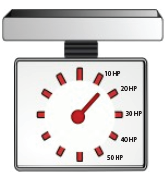 Have you ever wondered what 10 or 20 extra horsepower might "feel" like in your car?
Have you ever wondered what 10 or 20 extra horsepower might "feel" like in your car?
Maybe you've wondered how removing 100lbs will affect your car in terms of how much horsepower you'd have to gain to accomplish the same thing.
These questions are wise to ask because they can be used to make significantly better modification choices and frankly it can be fun to "simulate" different modification scenarios.
For example, if I could buy a carbon fiber hood that weighs 20lbs less than factory, it'd be nice to be able to view that weight loss in terms of horsepower. In other words, how many horsepower would I need to gain in order to accomplish the same thing as losing 20lbs? (Hint: it's pathetically little)
What if I wanted to determine if a dual exhaust system is worth while? How much more power would I have to make to offset the extra 20lbs? (in a 3500lb car with 215 hp, not even 1.25hp, so probably do-able)
Can someone on the forum claiming to feel a 1-2hp gain on their butt dyno really do so? Well, using this formula you'd see that they'd have to be able to feel the difference between having groceries in the car vs not having groceries in the car to "feel" that supposed gain.
What about if I wanted to see how much weight I'd have to lose to compete with the same car with 50 extra horsepower?
All of these kinds of questions can be answered with the simple math in today's article.
Posted in Engine
3 Comments
More Bad News for “Drop-In Air Filters”
In previous testing, which I don't believe I ever posted here, in my IS300 I found that there is actually MORE restriction created by the aFe filter for the IS300 (due probably to the construction of the filter - more on that in a later article if I can find the pictures).
The HKS air filter (foam) flowed -slightly- better, but by slightly better, I mean less than 0.1 inches of water better which is so little that it literally makes no difference at all. The K&N was a similar story to the aFe.
I don't care what your butt dyno says because frankly, it's the most deceptive thing on the planet and you can't feel a 1-2hp difference... no matter how good you are.
But there's worse news for the drop-in filter crowd. Unfortunately, as expected, they also filter a lot worse than the factory paper air filter. Over time, that means more wear on your engine. Enough to matter? Maybe not, though some foam filters are pretty awful and I can only imagine how bad those cheap eBay conic filters are.
Posted in Engine
2 Comments
Stiff Stuff: Strut Bars and Braces
No matter what car you drive, there are a number of suspension braces available 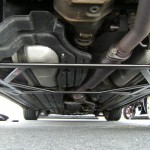 to supposedly improve handling. People shell out hundreds, even thousands of dollars on strut bars, under body braces, suspension member braces, fender braces, and frankly braces that attach to just about anything that has a bolt in it.
to supposedly improve handling. People shell out hundreds, even thousands of dollars on strut bars, under body braces, suspension member braces, fender braces, and frankly braces that attach to just about anything that has a bolt in it.
But what do these bars really do, if anything? Are all braces the same or are there important differences between them?
In today's article, I hope to begin to decode a little bit about each of these extremely important questions. While everyone just assumes they wouldn't be so popular if they didn't "work", I am here to tell you that there are far more bad products on the market than good ones - especially when it comes to chassis braces.
I am going to limit my discussion here to strut braces as they are generally the most effective and common. However, aside from placement, all other braces you can fit to your car are going to have a similar function. (more…)
Posted in Braking & Handling
4 Comments

